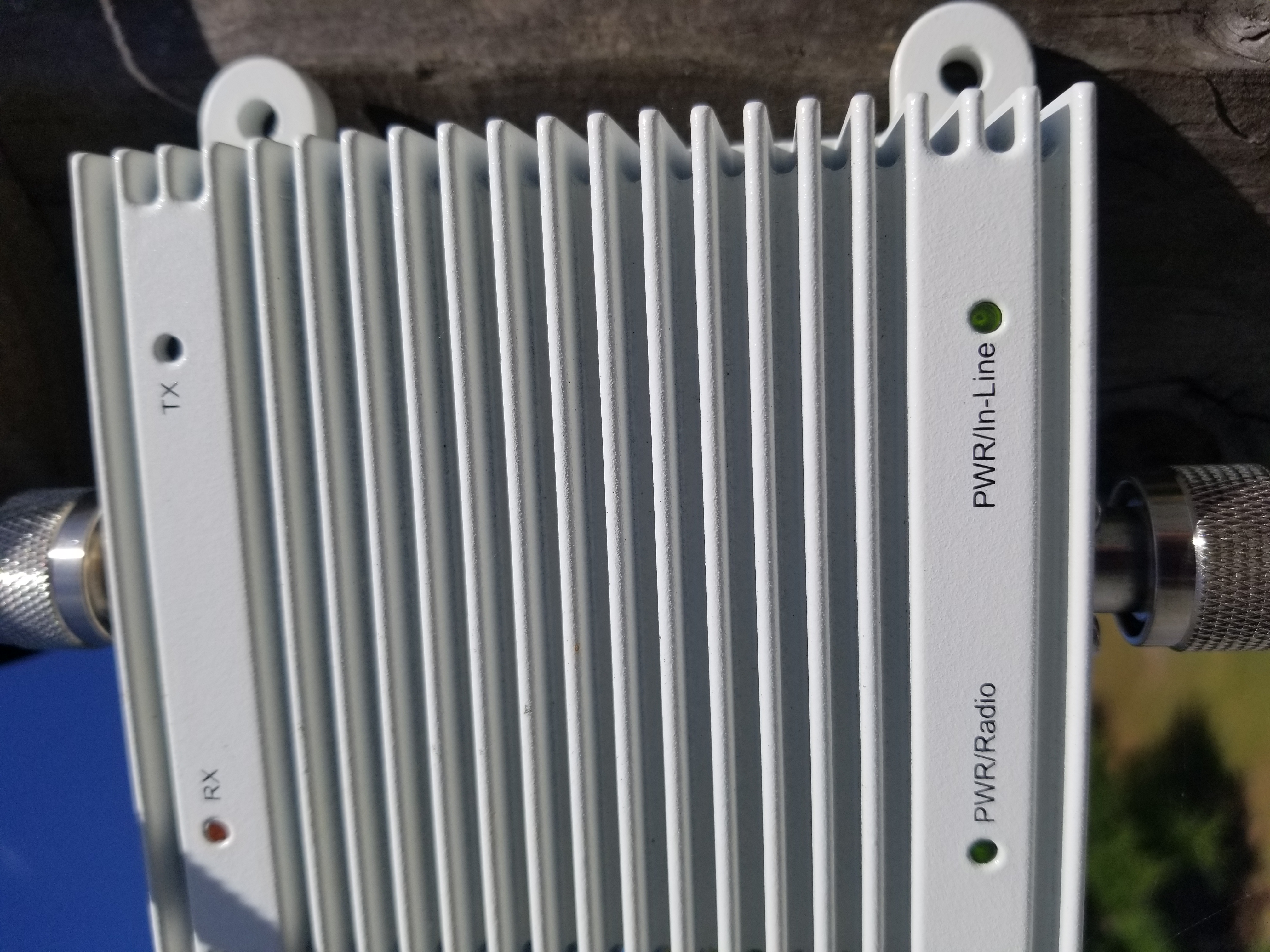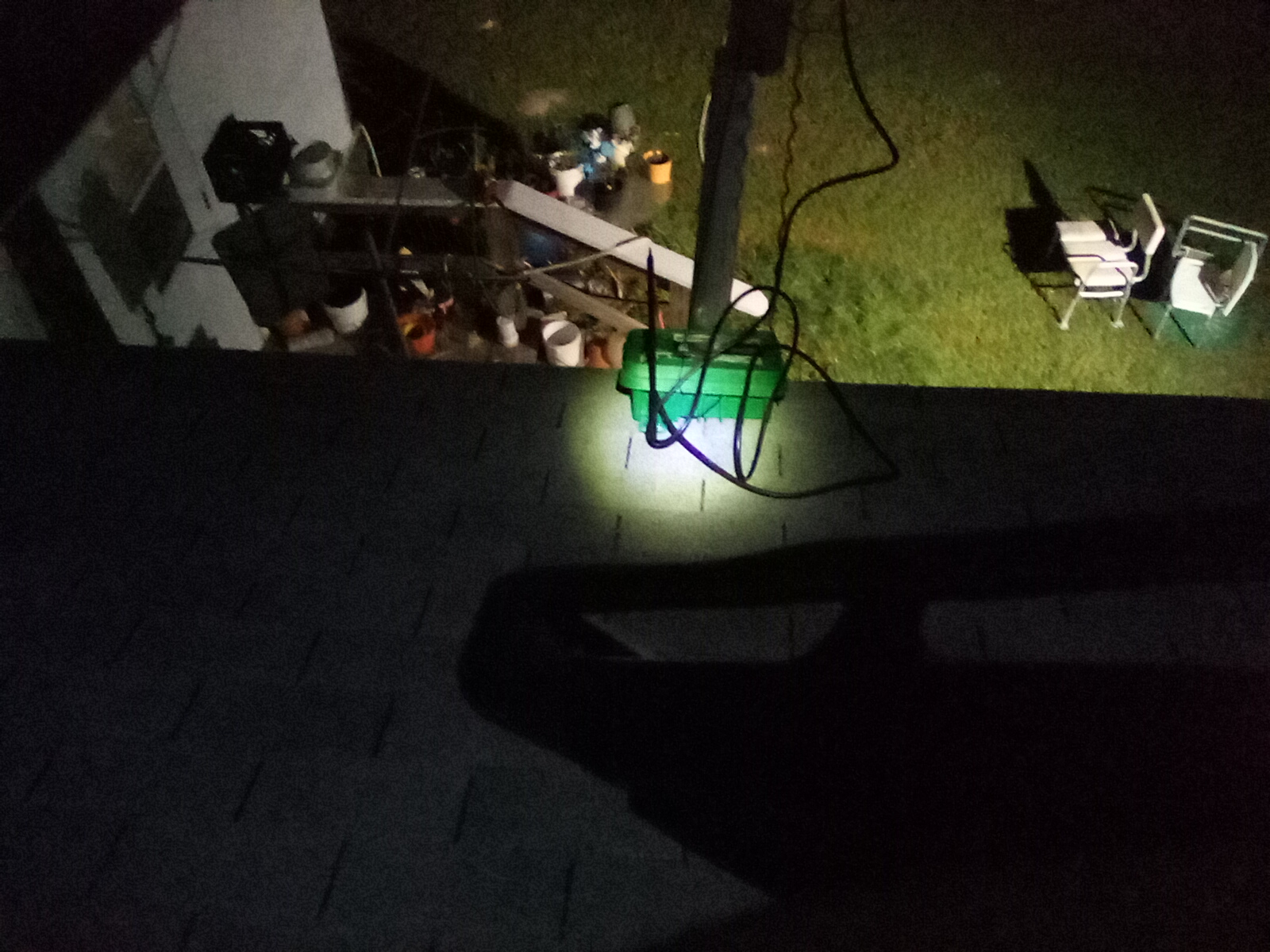Getting a Wi-Fi Signal Booster to Work




The picture on the left is my signal booster before I got it working. Notice that the light on the top right side is off; the transmit light, so no amplified signal is being sent to my Wi-Fi antenna. Take a look at my blog Home Security and Outside Wi-Fi Antennas too read about my Wi-Fi antenna.
The image on the right is pretty recent, and it shows my signal booster working correctly; i.e., the transmit light is flashing red as it sends amplified data packets to my Wi-Fi antenna. However, the signal booster had a flashing red Tx (transmit) light when I first hooked it up to my Alfa AIP-W515H router. Unfortunately the combination of that router and signal booster (APAG05-2) didn't produce a signal that went to the antenna. According to Jackie in Alfa technical support, the AIP-W515H router is too strong. The booster can at most increase the signal strength 10 fold, but has a limit of 2 watts; i.e., the booster won't work with a router that has a power output that's over 200 mw. I'm currently using an Alfa R36AH router, that has a max output of 199 mw. As you can see in the above picture (on the right) everything is working now, but that wasn't true at first (using my current hardware).
When I first installed my signal booster, and it didn't send a signal to the antenna, I tried tightening the connection to the router, but the rp-sma connector broke off. So I had to get a new router, and I wound up getting the right router, before Jackie (of Alfa technical support) told me what I needed. When I hooked up the R36AH router, I got a signal to the antenna, but it wasn't boosted. I contacted Rokland technical support (I bought the router and booster from Rokland; they're an Alfa reseller), and Jason (the support tech) sent me a return label. I got their only other (at the time) APAG05-2 signal booster, but it didn't work any differently then the first booster. This time Jason told me this was a tested device, and it worked before Rokland shipped it to me. Jason got me in touch with Jackie at Alfa technical support, too debug and analyze why my setup wasn't working.
Jackie made quite an effort at trying to solve my issue, asking me to send him pictures of my setup and asking questions about its specs. Jackie resorted to the basics for an antenna setup; reduce the length of coax I was using (CFD 400), and replace all metal on metal contacts with connectors separated by short cable sections (LMR 400). I also moved the booster to my roof, and connected it directly to my antenna; reduced some of my cable usage, but still no signal boost. I told Jackie about my lack of results, and he recommended I test the booster by attaching a 5 dbi antenna to it; that worked, and I got a flashing red TX light. Since there was no coax in the working setup, I moved the router to the roof, and connected it directly to the signal booster; it didn't work. BTW (and this is important) too avoid having to run an Ethernet cable from the router to the modem, I plugged a Wi-Fi adapter into the router's USB port. Fortunately, it rained shortly after I had this new Wi-Fi setup (though at the time it seemed horribly unfortunate). The rain destroyed my router, but the adapter was OK. I ordered a new R36AH router, hooked it up, and it worked. The previous router had a bad rp-sma connector (it felt loose to me). Now that I had a working setup, I didn't want to be destroyed by rain, again. I put my router in a weatherproof plastic box, wrapped the Wi-Fi adapter in Glad wrap (except the antenna), and put it under the weatherproof box (except the antenna - I swapped out the adapter's oem antenna with a 22 dbi dipole antenna).

The APAG05-2 signal booster is everything I had hoped for. Not only are all my outdoor webcams working (they were pre-booster, as well), but now I can walk back into my property's pine forest and still listen to YouTube videos or Amazon Music. If you have an outdoor Wi-Fi antenna, I can heartily endorse getting a signal booster for it.